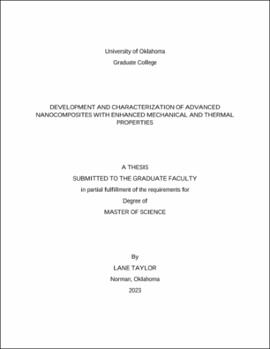| dc.description.abstract | The mechanical and thermal properties of composites made of polydimethylsiloxane (PDMS), glass micro-balloons (GmBs), and carbon nanotubes (CNTs) were investigated in this thesis. The objective of this study was to determine the effects of varying concentrations of GmBs and CNTs on the mechanical, resistive, and thermal behavior of the composites. The experimental approach involved preparing composite samples using a casting method, where the PDMS polymer was mixed with a fixed 1.25% of CNTs and varying concentrations of GmBs. The mixing and casting process was carefully crafted to ensure no GmBs were crushed during the process and to allow for quality samples to be produced for more accuracy during testing. Next, the samples were then subjected to mechanical and thermal tests to evaluate their properties. The mechanical properties were evaluated using two main types of tensile tests, testing until fracture and cyclic testing. During these tests the resistivity properties were measured to determine the max resistance change and the repeatability of the resistance measurements. The thermal properties were evaluated using LFA technology to determine the thermal diffusivity and to calculate thermal conductivity. Finally, the resistance was measured while the sample underwent heating to determine the effects of temperature on resistance. The results of the study showed that the incorporation of GmBs and CNTs in PDMS improved and can alter the mechanical, resistive, and thermal properties of the composite material. The addition of GmBs resulted in a significant decrease of the thermal conductivity while increasing the resistance change during tensile tests. Those samples with the highest loadings of GmBs had the best resistance stability at the widest temperature range. The combination of GmBs and CNTs resulted in a synergistic effect, where the material properties of the composite were enhanced to a greater extent than when either component was added alone. Overall, these experiments added valuable insight to the abilities of CNT and GmB composites, but farther testing can still be completed. Testing higher loadings of GmBs would be very beneficial but more complex mixing methods would be required. Since the CNT loadings remained constant, varying the CNT amount could possibly make the material properties more favorable for different applications. | en_US |

